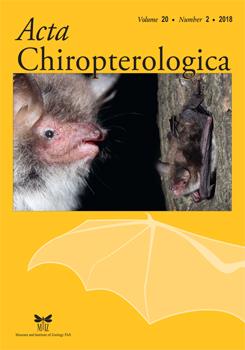Many social animals utter distress calls in the context of fear. These vocalizations may serve to attract audiences for help, warn individuals of danger, and confuse the predator. Here, we aim to assess the function of distress calls in free-living least horseshoe bats, Rhinolophus pusillus. We recorded distress calls from four allopatric colonies in mainland China. Playback trials, consisting of distress calls, silence, and noise, were presented to bats outside three bat roosts. Rhinolophus pusillus emitted long, harsh, broadband calls when under duress. Playback of distress calls induced a significant increase in bat passes at the loudspeaker in comparison with control trials. The number of recorded echolocation pulses increased 3.2–6.1 folds during playbacks of distress calls compared to playbacks of silence, and 2.9–5.2 folds compared to playbacks of noise. There was a positive association between bat passes and echolocation vocalizations. However, some bats delayed their emergence from the roost in response to distress call stimuli. Despite similar delayed responses, more bat passes were detected in the presence of allopatric distress calls than those from colony members. Overall, the results indicate that distress calls could attract and warn conspecifics in least horseshoe bats.
How to translate text using browser tools
14 February 2019
Function of Distress Calls in Least Horseshoe Bats: A Field Study Using Playback Experiments
Xiu Wu,
Yulan Pang,
Bo Luo,
Man Wang,
Jiang Feng
ACCESS THE FULL ARTICLE

Acta Chiropterologica
Vol. 20 • No. 2
December 2018
Vol. 20 • No. 2
December 2018
alarm
Bat
conspecific recruitment
Distress call
predation risk




